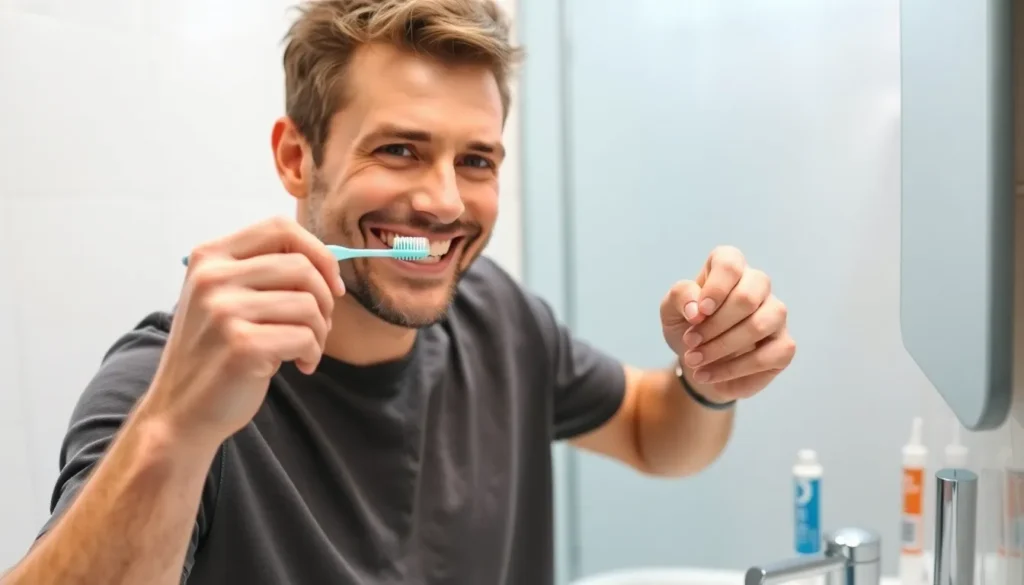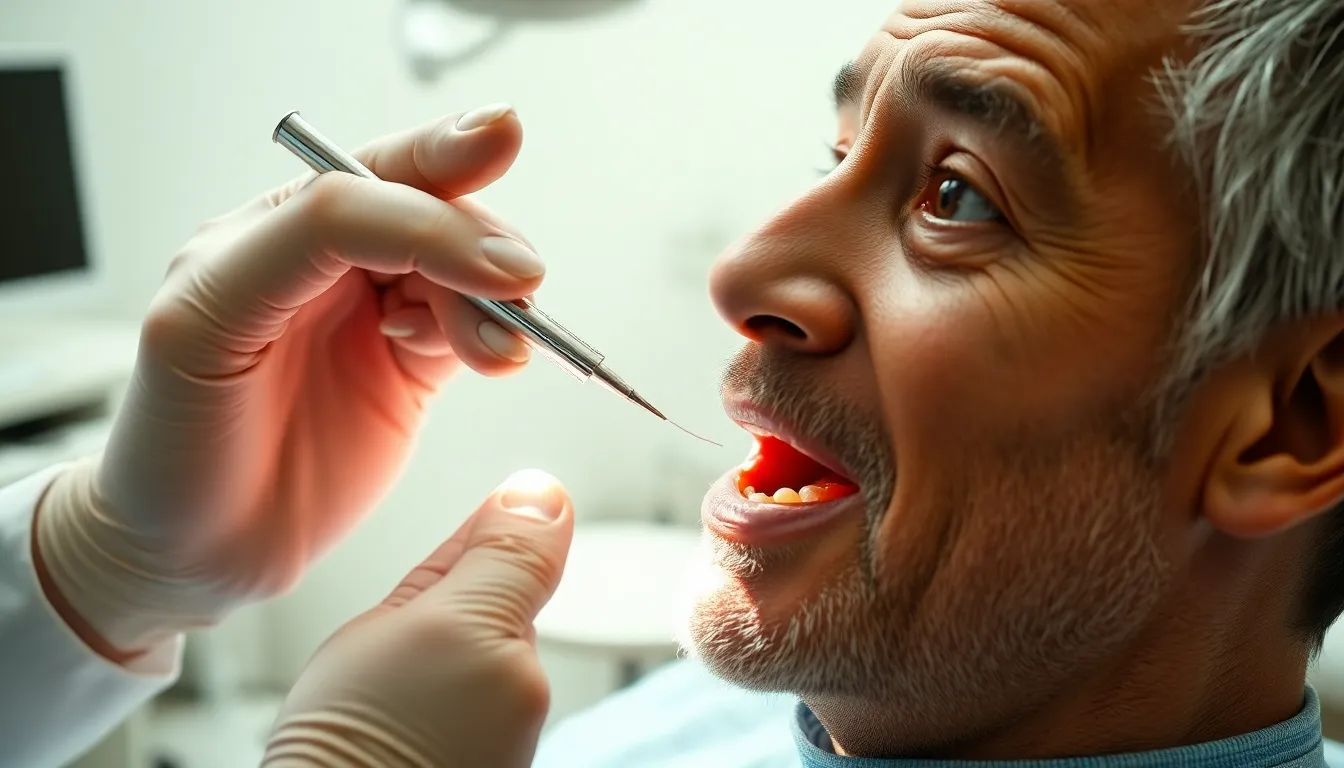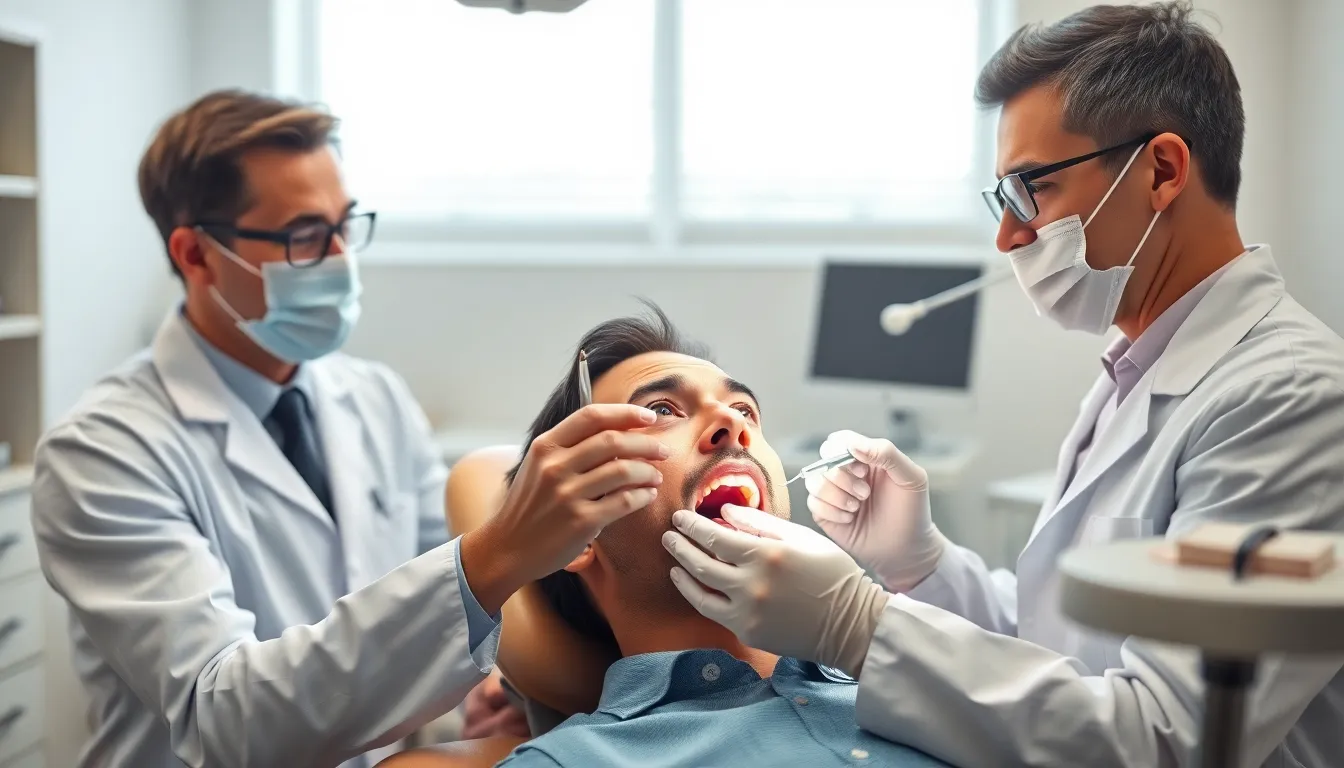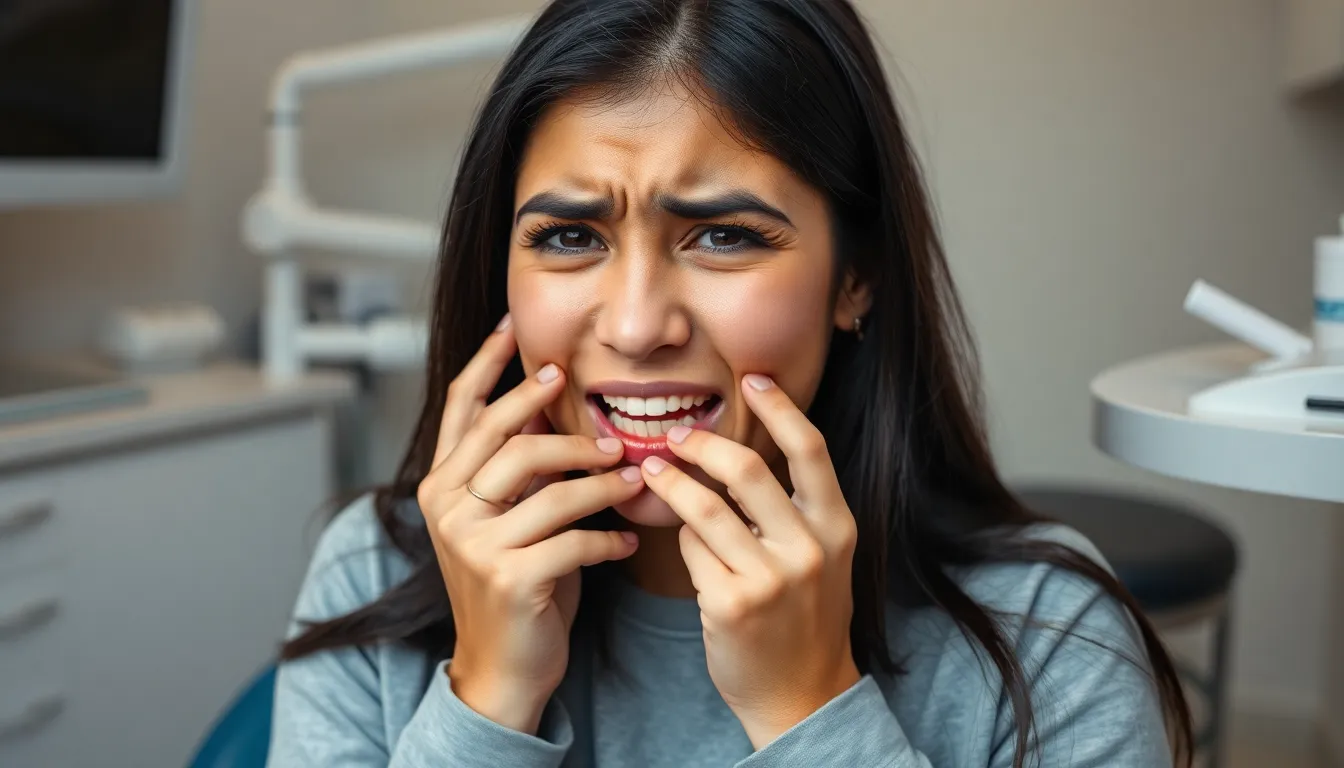Did you know that overbrushing your teeth can actually damage them? While brushing is essential for oral health, aggressive scrubbing might be doing more harm than good to your precious smile.
You’ve probably been told since childhood that brushing thoroughly keeps your teeth healthy. But, many people don’t realize there’s a fine line between proper dental care and excessive brushing. When you brush too hard or too frequently, you risk wearing down enamel, irritating gums, and creating dental problems that could have been avoided with gentler techniques.
What Is Overbrushing Teeth?
Overbrushing occurs when you apply too much pressure or use improper techniques while brushing your teeth. Many people mistakenly believe that scrubbing harder leads to cleaner teeth, yet this aggressive approach actually harms dental health. Dental professionals define overbrushing as brushing with excessive force, using a hard-bristled toothbrush, or cleaning too frequently.
“I see patients every week who’ve damaged their teeth and gums from overbrushing,” says Dr. Todd B. Harris. “One patient came in with severe gum recession and tooth sensitivity. She’d been brushing vigorously three times daily with a medium-bristled brush, thinking she was doing the right thing for her oral health.”
The technical term for damage caused by overbrushing is “toothbrush abrasion.” This condition affects approximately 20% of adults, according to the American Dental Association. Recognizing the signs early helps prevent permanent damage to your teeth and gums.
Contrary to popular belief, effective tooth cleaning doesn’t require important pressure. Studies show that plaque removal depends more on proper technique and thorough coverage than on how hard you press. The bristles of your toothbrush need only make contact with tooth surfaces to disrupt and remove plaque buildup.
Signs You May Be Overbrushing Your Teeth
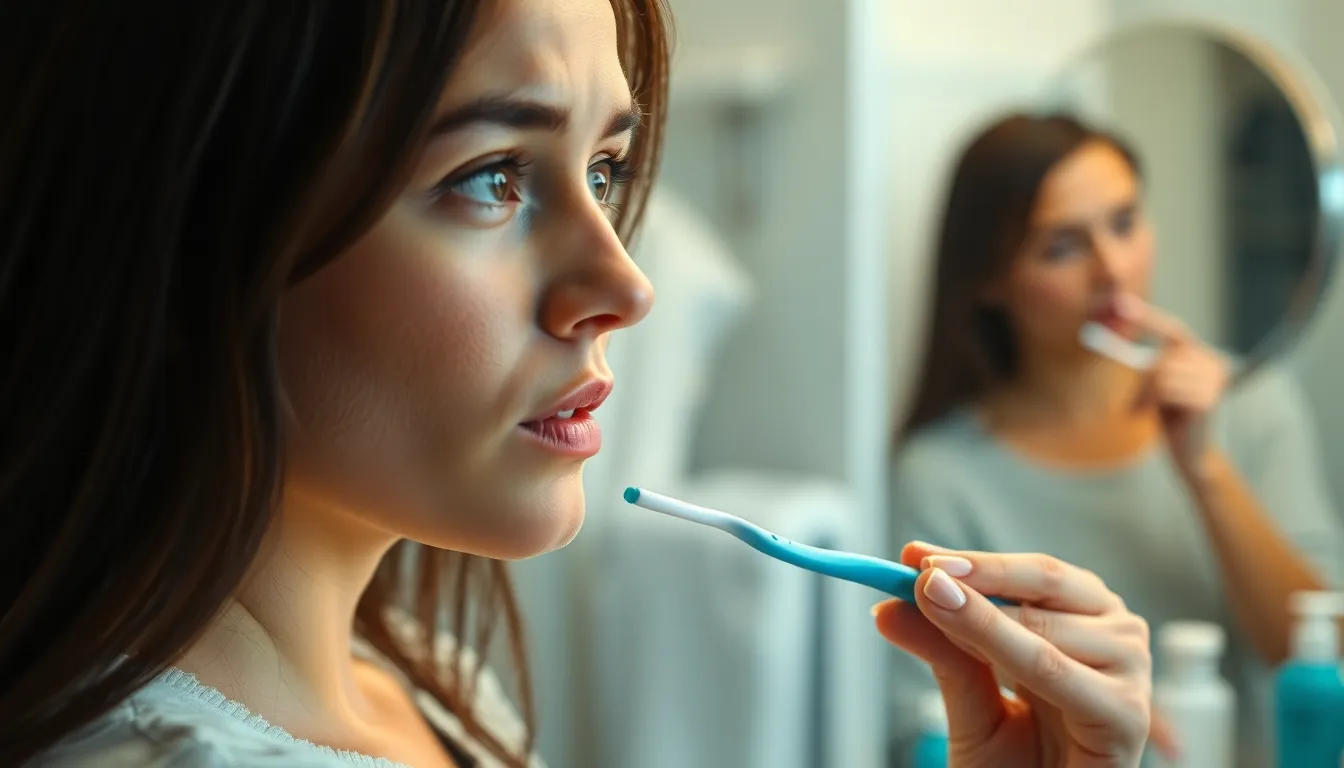
Spotting the signs of overbrushing early can help prevent long-term damage to your oral health. Your mouth often provides clear signals when brushing techniques are too aggressive or frequent.
Receding Gums
Receding gums are a primary indicator that you’re brushing too vigorously. Your gum tissue gradually pulls back from the tooth surface, exposing the roots that are normally protected. This recession creates small pockets between teeth and gums where bacteria can accumulate. Dr. Todd B. Harris notes, “I’ve treated many patients who were shocked to learn their diligent brushing was actually causing their gums to recede. One patient brushed after every meal with firm pressure, believing she was being thorough, but ended up with important recession by age 35.”
Tooth Sensitivity
Increased sensitivity to temperature extremes often signals overbrushing damage. Your teeth might react painfully to hot coffee, ice cream, or sweet foods when protective enamel thins or roots become exposed. This discomfort occurs because the sensitive dentin layer underneath enamel connects directly to the nerve. Many patients describe this sensation as a sharp, sudden pain that shoots through the tooth when consuming certain foods or drinks.
Worn Enamel
Enamel wear from aggressive brushing creates noticeable changes in your teeth’s appearance and function. Your teeth might develop visible indentations near the gumline or appear yellower as the white enamel thins, revealing the yellowish dentin beneath. Unlike other tissues, dental enamel doesn’t regenerate once damaged, making this damage permanent. According to dental studies, mechanical abrasion from improper brushing techniques ranks among the leading causes of enamel loss, affecting approximately 20% of adults with varying severity.
The Damaging Effects of Overbrushing
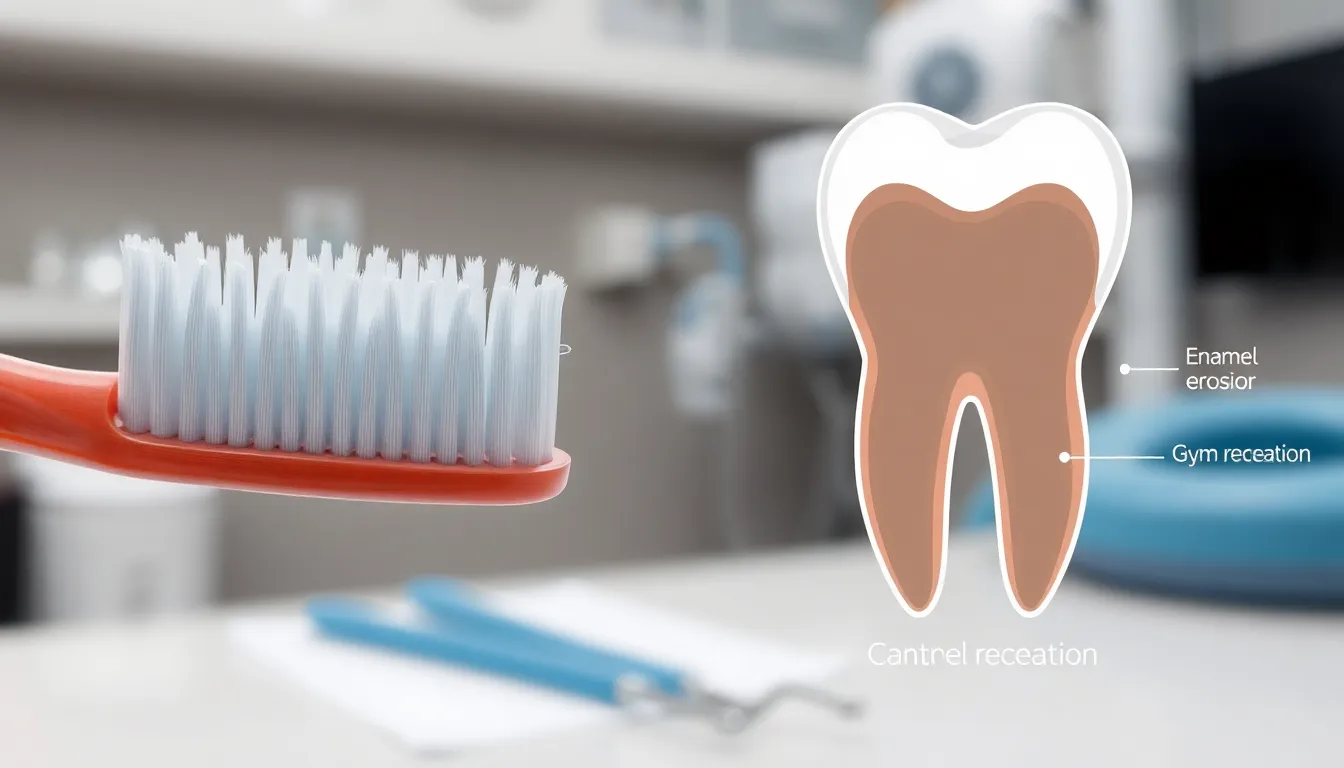
Overbrushing creates many harmful effects on your oral health even though good intentions. Brushing too frequently or vigorously damages critical structures in your mouth, leading to long-term dental problems that are often irreversible.
Gum Recession and Periodontal Disease
Aggressive brushing techniques force your gums to pull away from teeth, exposing vulnerable root surfaces. These receded gums create pockets where bacteria thrive, significantly increasing your risk of periodontal disease. Dr. Todd B. Harris notes, “Many patients are shocked to learn their diligent brushing actually caused their gum recession. The damage happens gradually, making it difficult to notice until important recession has occurred.” Clinical studies show gum tissue doesn’t regenerate easily once damaged, making prevention through proper brushing technique essential for maintaining healthy gum attachments.
Enamel Erosion
Your tooth enamel faces permanent damage from overbrushing, especially when using hard-bristled brushes or applying excessive pressure. Dental enamel cannot regenerate once worn away, leaving underlying dentin exposed and vulnerable to decay. Research indicates that brushing immediately after consuming acidic foods compounds this damage as the enamel is temporarily softened. A recent patient of Dr. Harris came in with severe enamel loss on her upper molars from years of aggressive brushing with whitening toothpaste, requiring extensive restoration work that could have been avoided with gentler techniques.
Proper Brushing Techniques to Prevent Damage
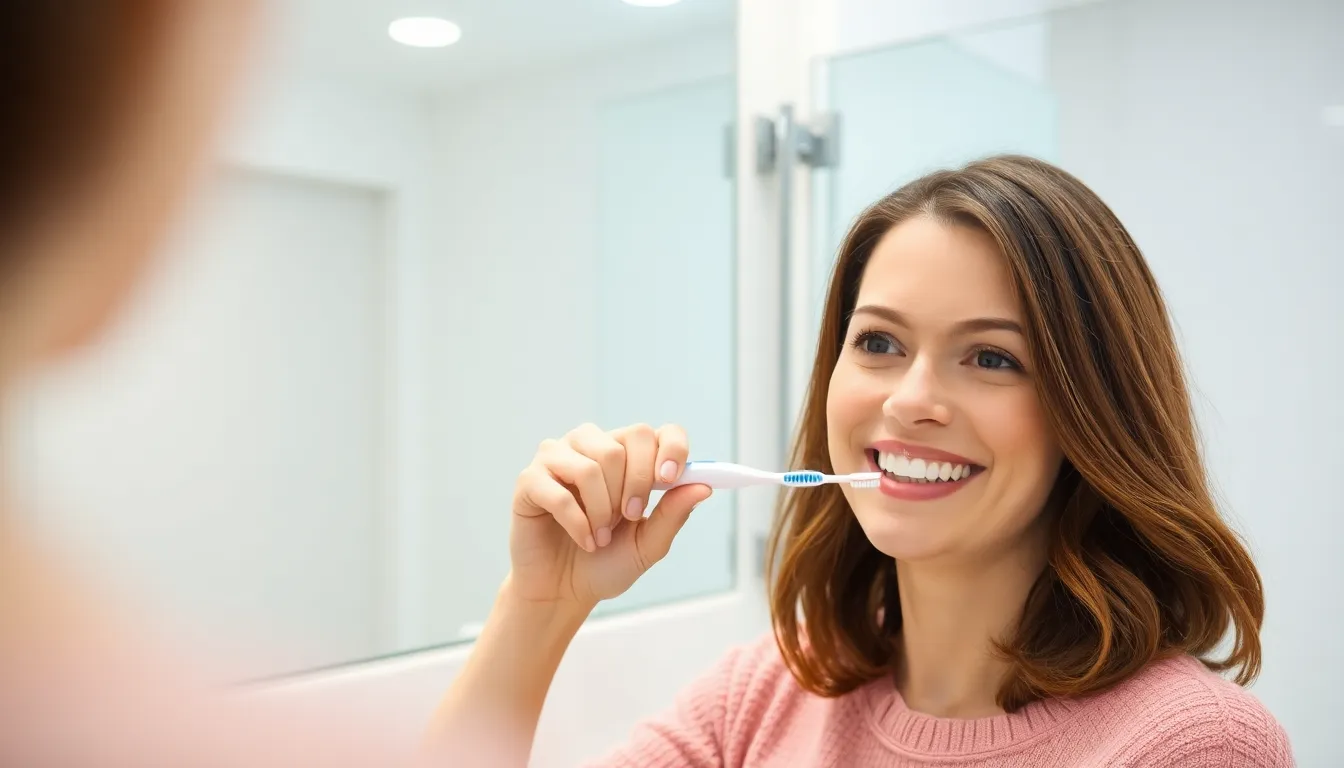
Protecting your teeth from overbrushing damage requires adopting exact techniques and tools that minimize harm while maximizing cleaning effectiveness. The right approach balances thorough cleaning with gentle treatment of your teeth and gums.
Choosing the Right Toothbrush
Soft-bristled toothbrushes provide optimal cleaning without damaging your enamel or gums. Hard or abrasive bristles significantly increase enamel wear and gum damage when combined with aggressive brushing movements. Dr. Todd B. Harris often tells his patients, “I’ve seen countless cases where patients switched from medium or hard bristles to soft ones and experienced remarkable improvement in their gum health within weeks.” Electric toothbrushes with pressure sensors can also help by alerting you when you’re applying excessive force during brushing sessions.
The Correct Pressure and Motion
Gentle pressure ensures effective cleaning without causing damage to your teeth’s protective layers. Vigorous brushing wears down enamel and cementum, exposing the vulnerable inner tooth layers and creating sensitivity issues. Small, circular motions clean more effectively than harsh horizontal scrubbing, reducing wear patterns and gum irritation. Your brushing technique should feel like you’re massaging your teeth rather than scrubbing them. One patient shared with Dr. Harris: “I always thought I needed to brush hard to get my teeth clean until my dentist showed me how gentle circles actually removed more plaque with less damage.”
Optimal Brushing Duration
Brushing for two minutes twice daily provides sufficient cleaning without risking damage from overexposure. Extending beyond this recommended duration contributes to enamel erosion and gum recession without providing additional cleaning benefits. Timing your brushing sessions helps maintain consistency and prevents unconscious overbrushing habits. Children under eight face additional risks from extended brushing, as swallowing fluoride-containing toothpaste during lengthy sessions can lead to fluorosis, causing discoloration and mottling of developing teeth. Many dental professionals recommend using timers or electric toothbrushes with built-in timers to ensure you’re brushing for the right amount of time.
Dental Products That Help Prevent Overbrushing
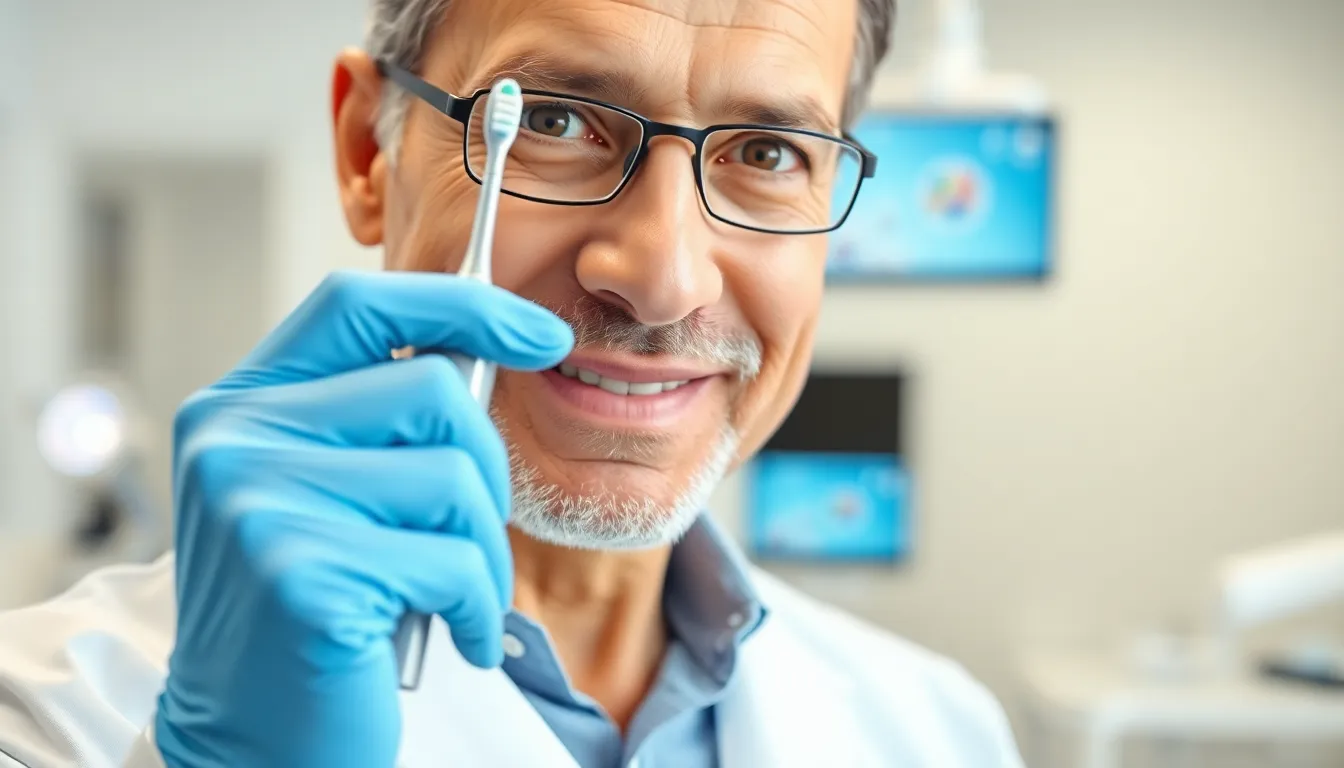
Modern dental products offer innovative answers to combat overbrushing, protecting your gums and enamel from unnecessary damage. These specialized tools provide gentle yet effective cleaning while helping you maintain proper brushing technique.
Electric Toothbrushes with Pressure Sensors
Electric toothbrushes with pressure sensors actively monitor your brushing force and alert you when you’re applying too much pressure. These smart devices detect excessive force between bristles and teeth, providing immediate feedback through vibration changes, warning sounds, flashing lights, or motor slowdowns. Your brushing technique improves naturally as you respond to these real-time alerts, reducing gum irritation and enamel wear over time. Many modern models automatically reduce power or shut off completely after detecting sustained pressure, preventing damage before it occurs.
“Electric toothbrushes with pressure sensors have been game-changers for my patients who struggle with aggressive brushing habits,” notes Dr. Todd B. Harris. “The immediate feedback helps them develop gentler techniques, and I’ve seen remarkable improvements in gum health within weeks of switching.”
These devices eliminate the need for manual scrubbing since the motor handles the cleaning motion, encouraging a lighter touch. Premium models feature multiple brushing modes, including sensitive settings specifically designed for vulnerable areas and individuals recovering from gum recession.
Soft-Bristled Toothbrushes
Soft-bristled toothbrushes provide effective cleaning without the abrasiveness that damages oral tissues. Dental professionals universally recommend soft bristles for daily use, especially for people with sensitive gums or a history of overbrushing. The gentle filaments remove plaque and debris while minimizing friction against enamel and gum tissue.
Quality electric toothbrush heads typically feature end-rounded bristles that clean thoroughly without causing microscopic scratches to tooth surfaces. These specialized bristle designs conform to tooth contours and gum lines, reaching between teeth without aggressive pressure.
Dr. Harris emphasizes, “I’ve treated many patients with gum recession caused by years of using medium or hard bristles. Switching to soft bristles is often the single most effective change they can make to halt further damage and promote healing of irritated tissues.”
The combination of soft-bristled brushes and proper technique creates an ideal balance between cleaning effectiveness and tissue protection. Electric models with both pressure sensors and soft bristles offer comprehensive protection against the harmful effects of overbrushing while maintaining optimal oral hygiene.
When to Consult a Dentist About Overbrushing
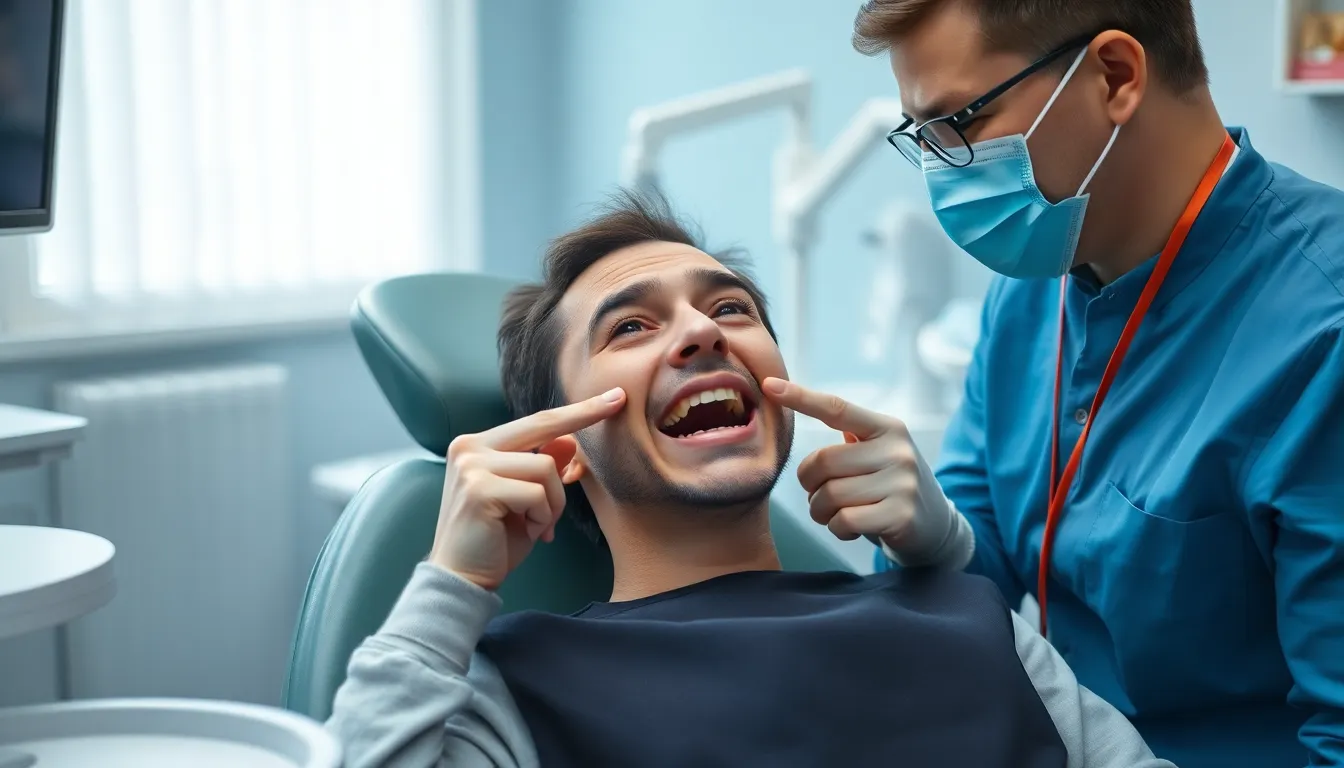
Recognizing when to seek professional help for overbrushing issues can prevent long-term damage to your teeth and gums. You’ll need to watch for persistent tooth sensitivity, especially discomfort when consuming hot, cold, or acidic foods and beverages. Bleeding or receding gums often indicate aggressive brushing has damaged the delicate gum tissue. Visible enamel wear, appearing as grooves or wedge-shaped indentations near the gum line, signals that immediate dental attention is necessary. Swelling in the gum area requires professional evaluation to determine if overbrushing has contributed to inflammation or infection.
Dr. Todd B. Harris notes, “Many patients come to me only after important damage has occurred. One patient brushed so vigorously for years that her gum recession exposed nearly a quarter of her tooth roots. Had she recognized the early warning signs and consulted me sooner, we could have prevented much of this irreversible damage.”
Dental professionals can assess the severity of toothbrush abrasion during regular checkups. Your dentist might recommend treatments such as bonding to fill grooves caused by overbrushing or suggest protective measures for exposed roots. Early intervention by a dental professional can halt the progression of damage and help establish healthier brushing habits before permanent harm occurs.
Conclusion
Protecting your smile requires more than just brushing regularly—it demands proper technique. Gentle circular motions with a soft-bristled brush twice daily for two minutes strikes the perfect balance between cleanliness and protection.
Electric toothbrushes with pressure sensors can transform your brushing habits by providing immediate feedback. Remember that effective cleaning doesn’t require force but rather thorough coverage of all tooth surfaces.
Don’t wait for visible damage before addressing potential overbrushing issues. Persistent sensitivity receding gums or enamel wear should prompt a dental visit. Your dentist can provide personalized guidance to correct harmful habits before they cause permanent damage.
By adopting gentler techniques and appropriate tools you’ll maintain optimal oral health while preserving your enamel and gums for years to come.
Frequently Asked Questions
What is overbrushing and why is it harmful?
Overbrushing is applying too much pressure, using improper techniques, or brushing too frequently. While many believe aggressive brushing leads to cleaner teeth, it actually damages your oral health by wearing down enamel, causing gum recession, and increasing tooth sensitivity. About 20% of adults experience “toothbrush abrasion” from overbrushing, which can lead to permanent dental damage if not addressed.
What are the signs that I’m brushing too hard?
Look for receding gums (where gum tissue pulls back to expose more of your tooth), increased sensitivity to hot or cold foods and drinks, and visible changes in your teeth such as indentations or a yellowish appearance. Bleeding gums after brushing can also indicate you’re using excessive force. These symptoms develop gradually, so you might not notice until significant damage has occurred.
Can enamel grow back after being damaged by overbrushing?
No, dental enamel cannot regenerate once it’s worn away. Enamel is the hardest substance in your body, but it has no living cells and therefore cannot repair itself naturally. Once damaged by aggressive brushing, especially combined with acidic foods, the loss is permanent. This makes prevention through proper brushing techniques essential for maintaining long-term oral health.
What type of toothbrush should I use to prevent damage?
Use a soft-bristled toothbrush rather than medium or hard bristles. Soft bristles effectively remove plaque and food particles while minimizing damage to enamel and gums. Many dentists report significant improvements in patients’ gum health after switching to soft-bristled brushes. Electric toothbrushes with pressure sensors can also help by alerting you when you’re applying too much force.
How should I brush my teeth properly?
Use gentle pressure and small, circular motions rather than aggressive back-and-forth scrubbing. Hold your brush at a 45-degree angle to your gums and focus on thoroughly cleaning all surfaces. Brush for two minutes twice daily—longer isn’t necessarily better. Wait at least 30 minutes after consuming acidic foods before brushing to prevent additional enamel damage when it’s temporarily softened.
Are electric toothbrushes better for preventing overbrushing?
Electric toothbrushes with pressure sensors can significantly reduce overbrushing by providing real-time feedback when you apply too much force. These devices alert you with a light, sound, or by reducing power when you’re brushing too hard. Dentists note that patients using these toothbrushes often show improved gum health. The combination of soft bristles and pressure monitoring creates an optimal balance between effective cleaning and tissue protection.
When should I see a dentist about potential overbrushing damage?
Consult a dentist if you experience persistent tooth sensitivity, bleeding or receding gums, visible changes in your teeth, or swelling in the gum area. Don’t wait until significant damage has occurred—early intervention can prevent irreversible problems. Regular dental checkups also allow professionals to assess any developing toothbrush abrasion and recommend appropriate treatments or protective measures before conditions worsen.
Can overbrushing cause long-term dental problems?
Yes, overbrushing can lead to serious, often irreversible dental issues. It commonly causes gum recession, which exposes vulnerable root surfaces and increases risk for periodontal disease. It also permanently erodes enamel, potentially leading to increased sensitivity, discoloration, and greater susceptibility to decay. These conditions typically develop gradually over time, making it important to adopt proper brushing techniques before damage becomes extensive.

